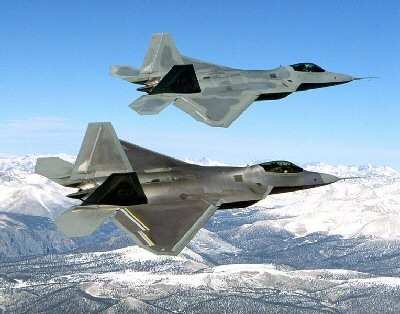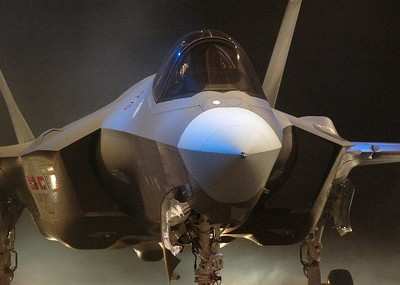Spending Shifts May Occur As Result Of Leadership Shakeup
The forced resignation of US Air Force Chief of Staff General
Michael T. Moseley and Secretary of the US Air Force Michael W.
Wynne last week may end production of the Lockheed Martin F-22
Raptor program, and increase Pentagon spending on equipment and
technology intended for current wars.

Their departure concluded a
turbulent relationship with Defense Secretary Robert Gates on
differing strategies and a recent string of public embarrassments
leading to their dismissals.
According to a Reuters report this week, analysts predict a
shift away from programs meant to combat future threats from larger
superpowers such as China and Russia and focus spending on programs
to supplement current efforts in Iraq and Afghanistan. The views of
Defense Secretary Gates and Air Force leadership on spending
priorities frequently differed and the recent departures offers an
opportunity for Gates to promote his strategy.
 As recently as March,
Gates argued sending more Predator UAVs to battle zones in Iraq and
Afghanistan as an "all-in" approach though both Moseley and Wynne
expressed concerns that current deployments were stretching its UAV
crews thin as it was.
As recently as March,
Gates argued sending more Predator UAVs to battle zones in Iraq and
Afghanistan as an "all-in" approach though both Moseley and Wynne
expressed concerns that current deployments were stretching its UAV
crews thin as it was.
Gates has often singled out the cutting-edge Lockheed Martin
F-22 Raptor as a prime example of what he deemed misplaced military
priorities. "The reality is we are fighting two wars, in Iraq and
Afghanistan, and the F-22 has not performed a single mission in
either theater," Gates told a Senate committee in February.
Under the leadership of Wynne and Moseley, 381 F-22s were sought
from Lockheed Martin -- more than twice as many as the 183 aircraft
outlined in the Defense Department budget. Costing more than $132
million each, the radar-evading F-22 remains the sole advanced air
superiority fighter in the USAF inventory.
Gates argues the F-22 -- the top US dogfighter -- is
"principally for use against a near peer," Pentagon code words for
China and Russia. Potential threats he deems are years away.
Air Force Gen. Bruce Carlson, head of a command responsible for
the development and testing of new systems, said in February the
Air Force would go on pushing for the F-22 Raptor, as it is
optimized for knocking out advanced air defenses of the larger
long-term threats.
"Most people say in the future there will be a Chinese element
to whatever we do," he told reporters on February 13.
In Carlson's remarks, "Gates correctly detected a lack of
willingness among Air Force leaders to follow his policies on F-22
fighters," said Loren Thompson of the Lexington Institute to
Reuters. Thompson is noted for his close ties to the Pentagon and
industry.
A perception the Air Force was quietly lobbying Congress to
extend the F-22 production line adds to the conflict as Gates has
left the decision to the next U.S. president to be elected in
November.
In its last major strategy review in 2006, The Pentagon said
China had the greatest potential "to compete militarily with the
United States and field disruptive military technologies that could
over time offset traditional US military advantages absent US
counter strategies."
William Hartung of the New America Foundation, a New York
research group predicted to Reuters that multibillion-dollar
programs like the F-35 Joint Strike Fighter from Lockheed Martin
and the Army's Future Combat Systems, co-managed by Boeing and SAIC
Corp may also be on the chopping block or may risk being stretched
out by Gates' emphasis on equipping for current wars.

Pentagon procurement in favor of armored trucks and other land
systems due to the pressure from the wars in Iraq and Afghanistan
has already begun to reshape spending. The trend likely to grow as
ground forces in the Army and Marine Corps continue to build.
 ANN's Daily Aero-Linx (05.06.25)
ANN's Daily Aero-Linx (05.06.25) ANN's Daily Aero-Term (05.06.25): Ultrahigh Frequency (UHF)
ANN's Daily Aero-Term (05.06.25): Ultrahigh Frequency (UHF) ANN FAQ: Q&A 101
ANN FAQ: Q&A 101 Classic Aero-TV: Virtual Reality Painting--PPG Leverages Technology for Training
Classic Aero-TV: Virtual Reality Painting--PPG Leverages Technology for Training Airborne 05.02.25: Joby Crewed Milestone, Diamond Club, Canadian Pilot Insurance
Airborne 05.02.25: Joby Crewed Milestone, Diamond Club, Canadian Pilot Insurance





